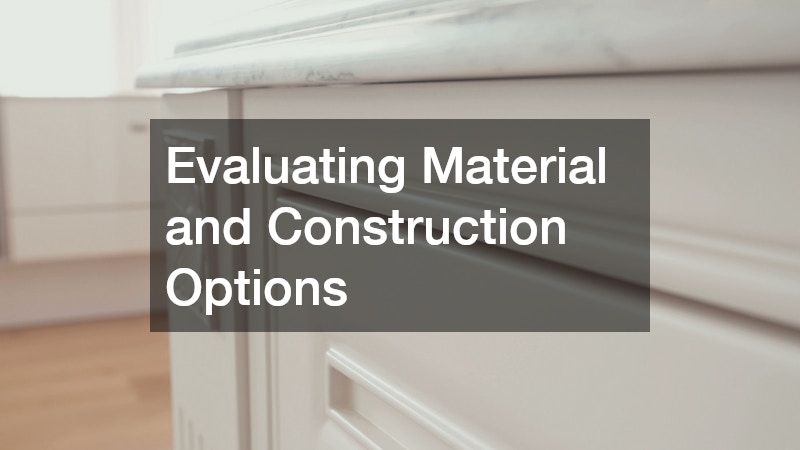When renovating a kitchen, investing in high-quality kitchen cabinets is a crucial decision. Cabinets not only affect the overall aesthetic of the space but also have a significant impact on functionality and storage. In regions like Oakville, MO, homeowners often prioritize durable materials and timeless designs that enhance the value of their homes.
Before embarking on this investment, it’s vital to assess your kitchen’s layout, storage needs, and design preferences to ensure that your new cabinets serve both practical and decorative purposes. The choice of cabinets can make or break the efficiency of your kitchen, making it a critical consideration.
Kitchen cabinets are more than just storage units; they frame your entire kitchen and set the tone for your decor. Whether you opt for a traditional, modern, or transitional design, the style of your kitchen cabinets can significantly influence your home’s value. Cabinets are often seen as a long-term investment worth meticulous planning and ample consideration. It’s essential to choose materials that offer a balance between durability and aesthetic appeal to withstand daily use and fluctuating style trends. Ensuring your cabinets align with your lifestyle and future needs is another vital aspect that requires careful thought.
Functionality should be at the heart of your cabinet choices, complementing your kitchen activities and ensuring convenience. The strategic placement of cabinets can streamline meal preparation, cooking, and storage activities, creating an efficient workflow. For instance, deep cabinets, pull-out shelves, and custom organizers can optimize space and keep kitchen essentials accessible and organized. Eco-friendly options are becoming increasingly popular, with many residents opting for sustainable materials that reduce environmental impact while offering resilience and longevity. The quest for the perfect kitchen cabinet involves balancing style, function, and eco-conscious choices.
Evaluating Material and Construction Options

When evaluating materials for your kitchen cabinets, consider durability, maintenance, and cost. Popular materials include solid wood, plywood, medium-density fiberboard (MDF), and metal, each offering distinct advantages and considerations. Solid wood is often favored for its strength and classic appeal, but it can be more costly and subject to warping in moisture-prone environments. Plywood offers a balance of strength and affordability, while MDF provides a smooth finish suitable for painted cabinets. Homeowners often choose materials that complement local climate conditions.
The construction quality of kitchen cabinets is equally important as the material choice. Dovetail joints, full-extension drawer glides, and soft-close hinges are features indicative of superior craftsmanship. When assessing kitchen cabinets in Oakville, MO, focus on construction techniques that promise durability and ease of use. High-quality finishes, from laminates to specialty paints, further enhance cabinet longevity and resistance to wear and tear. Prefabricated cabinets offer cost efficiency, while custom cabinetry allows for personalization and a perfect fit for unique kitchen layouts.
Before committing to a material or construction style, consider lifestyle factors and specific kitchen needs. For active families, resilient materials that endure frequent use without compromising appearance are essential. Semi-custom or custom cabinets may offer the flexibility required to address specific storage challenges and aesthetic desires. Residents often consult with experienced design professionals to ensure that their cabinet investments align with personal needs and budget constraints. Evaluating samples and finishes in person can provide invaluable insights into the look and feel of various options.
Budgeting and Planning for Your Kitchen Cabinet Investment
Effective budgeting is key to a successful kitchen cabinet investment, requiring a balance between quality, style, and cost. The average cost can vary significantly based on materials, customization level, and brand, making it essential to conduct thorough research. Establishing a clear budget allows you to prioritize features that matter most and avoid overspending on non-essential elements. Homeowners often rely on local resources for competitive pricing and expert guidance. By carefully planning your expenses, you can achieve an optimal balance of affordability and quality.
Planning for your new kitchen cabinets involves more than just selecting styles and materials; it encompasses timelines, installation, and potential disruptions. Coordinating with contractors, suppliers, and installers is crucial to minimize inconvenience during the kitchen renovation process. Many homeowners plan their projects around seasons to take advantage of local sales and promotions. Having a contingency plan for unexpected expenses or delays is also a sensible step to ensure a seamless renovation experience. Thoughtful planning reduces stress and ensures a smooth transition from concept to completion.
The decision to invest in kitchen cabinets should be informed by research and supported by local expertise. Leveraging community resources and recommendations can lead to valuable insights and trusted professional relationships. Homeowners benefit from engaging with local designers and contractors familiar with the area’s trends and standards. Overall, ensuring that your kitchen cabinets fit within your budget and meet your expectations will contribute to a successful and satisfying home project. Investing time and resources into the planning phase will pay off in the form of a beautifully functional and lasting kitchen space.
